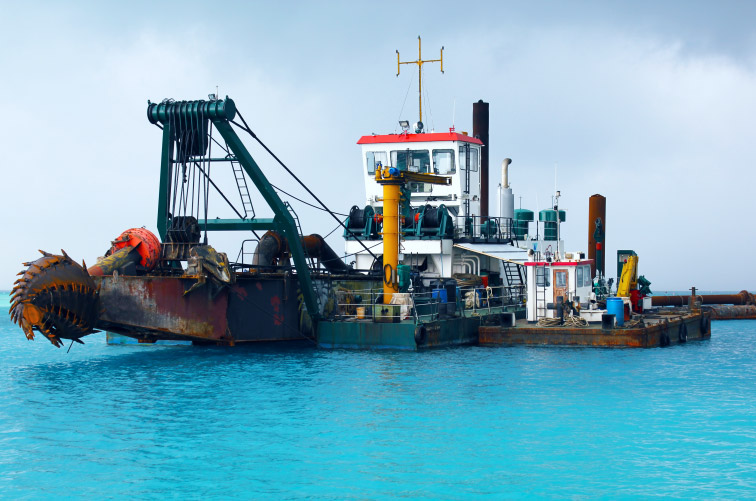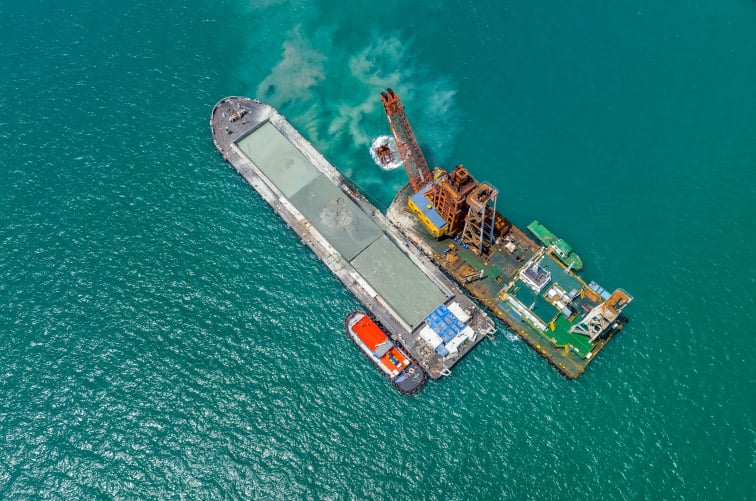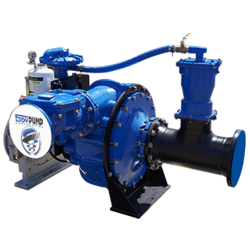Applications of EDDY Pump in Coast Guard Operations



Applications of Our Slurry Pumps in Coast Guard Operations

- Dredging: Slurry pumps cast off sediment, silt, and particles from harbors, navigation channels, and ports, ensuring safe passage for vessels.
- Sediment Management: These submersible pumps control sediment buildup in regions susceptible to silting, ensuring that water channels stay deep and sufficient for ships to navigate without obstructions.
- Pollution Response: In case of oil spills or dangerous material releases, the submersible pumps can extract contaminated water-solids combos for proper disposal or treatment.
- Salvage Operations: Submersible pumps aid in doing away with water from distressed vessels or flooded regions throughout salvage operations, assisting in stabilizing the situation and preventing similar damage.
- Beach Replenishment: EDDY Pump’s submersible pumps can ship sand and sediment from offshore resources to fill up eroded seashores, enhancing coastal safety and navigation.
- Underwater Debris Removal: Slurry pumps efficiently handle submerged debris like logs, wreckage, or discarded substances, preserving waterways clear and safe for navigation.
- Construction Projects: Our submersible pumps help in initiatives, including building or repairing piers, docks, and maritime systems by removing extra water and excavated substances.
- Training Exercises: Slurry pumps are utilized in education situations to simulate emergencies, permitting Coast Guard employees to practice their response strategies and beautify their talents.
- Emergency Response: These submersible pumps can speedily cast off water from flooded regions on vessels or in port centers throughout emergencies, minimizing ability harm.
- Maintaining Buoyancy: Slurry pumps help preserve the buoyancy of aids to navigation, like buoys, by doing away with water and sediment that might gather inside them.
CALL FOR SALES OR SUPPORT
If you need help with Pump Selection, Sales or Engineering Support
Call 619-345-5446

Application of EDDY Pump’s Hydraulic Dredging in Coast Guard Operations

- Navigation Channel Maintenance: Hydraulic dredging cleans navigation channels by removing sediment buildup, ensuring safe passage for vessels utilizing keeping ok water depths.
- Port and Harbor Expansion: The Coast Guard uses dredging to deepen ports and harbors, accommodating large ships and improving maritime transportation and commerce.
- Port Security and Clearance: Hydraulic dredging helps detect security threats by thoroughly examining port areas and detecting hidden items or threats around the port areas.
- Emergency Response: In the aftermath of storms or natural screw-ups, dredging facilitates getting rid of sediment and particles from waterways, restoring access for disaster relief, search and rescue efforts, and aiding in recuperation operations.
- Oil Spill Cleanup: Hydraulic dredging assists in convalescing oil-contaminated sediment for the duration of spill incidents, preventing further environmental harm and assisting in cleanup operations.
- Environmental Restoration: The Coast Guard employs this dredging method for restoring aquatic ecosystems by removing infected sediments or restoring herbal drift patterns.
- Shoreline Protection: Hydraulic dredging contributes to coastline protection by replenishing eroded seashores with sediment, bolstering coastal defenses against erosion and typhoon influences.
- Infrastructure Maintenance: Dredging supports keeping maritime infrastructure like piers, docks, and berths, ensuring they remain valuable and secure for naval activities.
- Sediment Disposal Management: EDDY Pump’s dredging consists of properly managing and disposing of dredged fabric, adhering to environmental rules, and preventing contamination.
- Waterway Accessibility: Hydraulic dredging enhances accessibility to remote or shallow-water areas, permitting Coast Guard vessels to reach places requiring help or surveillance.
- Economic Benefits: By facilitating green waterborne alternatives, hydraulic dredging contributes to the financial growth of coastal areas, reaping the rewards for each nearby group and countrywide interests.
- Flood Control: In areas vulnerable to flooding, hydraulic dredging helps enhance water drift, preventing the accumulation of sediment, which could exacerbate flood dangers.




